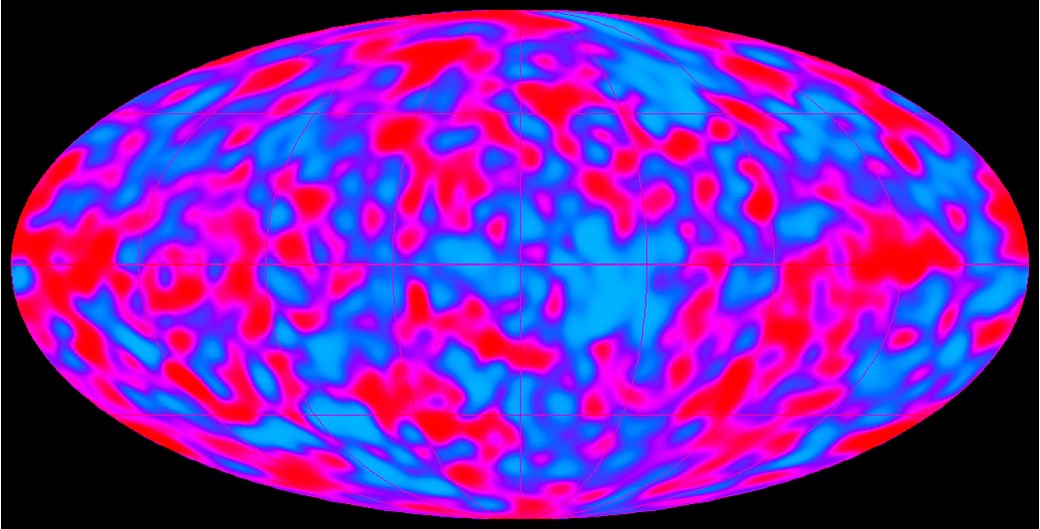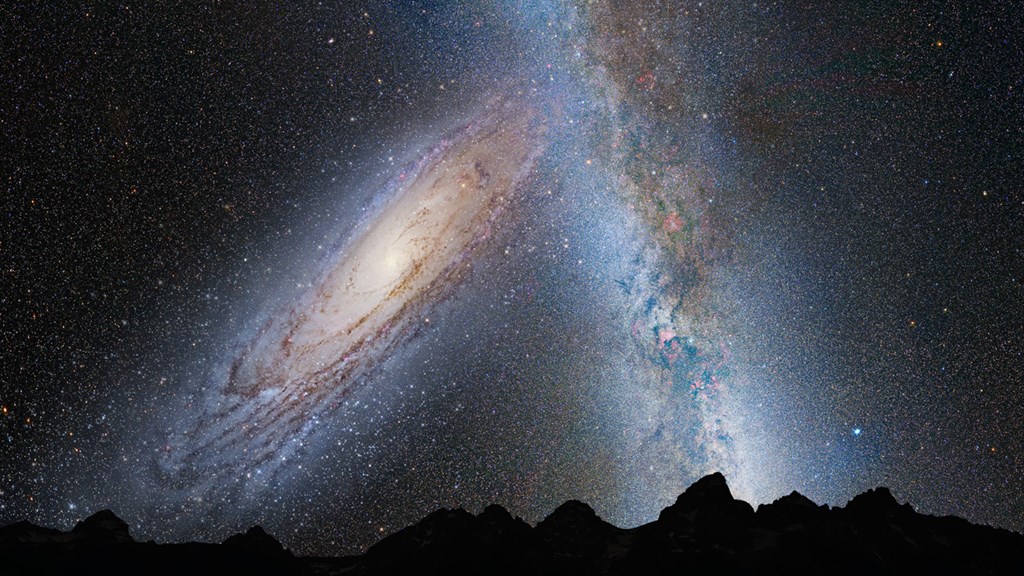Big Bang
About 13.8 billion years ago
The Big Bang is better described as a very fast expansion. According to this theory, the entire Universe and time began as a point of energy called a ‘singularity’ about 13.8 billion years ago. From this ‘singularity’, the entire Universe expanded very, very quickly. Astronomers can see that galaxies are moving away from our galaxy at very fast speeds. In fact, the more distant the galaxy, the faster they are moving away. So, if we wind back the clock to the beginning, it makes sense that there must have been a time when everything in the Universe was very close together, at the ‘singularity’. The early Universe was very, very hot (1000 trillion degrees Celsius). It had tremendous energy which transformed into matter as the Universe expanded and cooled.
Energy into matter: Atom formation
Atoms are the basic building blocks of matter. Everything in the Universe is made up of atoms (even you!). Atoms are made up of a central nucleus with electrons dancing around the nucleus at very fast speeds. However, the formation of complete atoms didn’t occur until 300,000 years after the Big Bang. To form a complete atom, an electron needs to join with a nucleus. However, because the early Universe was so hot, the light particles (photons) were very energetic and would knock away the electrons when they tried to join the nuclei to form atoms.
As space expanded and the Universe cooled, the photons had less energy to knock away electrons. It was 300,000 years before the Universe was cool enough to allow the electrons to be captured by the nuclei. Photons began to travel throughout the Universe. It is this light being ‘set free’ that astronomers can detect today and call the ‘Cosmic Microwave Background Radiation’. Along with the expansion of the Universe, this light is one of the major pieces of evidence for the Big Bang theory.

Solar System formation: Five billion years ago
The Solar System formed about five billion years ago. The Solar System formed by the ‘clumping together’ of material from a spinning cloud of gas and dust (the solar nebula) in a process called accretion. As the solar nebula clumped together, it became hotter. The collection of gas and dust that formed in the centre of the nebula became the Sun when it was big and hot enough to start nuclear fusion reactions. Planets, moons, comets and asteroids formed from the gas and dust that were spinning too fast to fall into the centre of the cloud. Small chunks formed when bits of dust collided and stuck together. These chunks gradually came together to form planets. Dense, terrestrial planets and asteroids formed in the inner part of the Solar System. Jovian (Jupiter-like) planets and comets, which were less dense, formed in the cold outer parts. Jovian planets became big enough for their gravity to be able to pull in the remaining gas from the nebula.
Galaxies colliding: Two billion years in the future
Our Sun is one of billions of stars in the Milky Way Galaxy. Galaxies can be found in groups or clusters scattered around the Universe. One galaxy group or cluster can contain anywhere between 10 galaxies to 1000 galaxies.
The Milky Way Galaxy is part of a group of galaxies called the Local Group. One of our neighbours is the Andromeda Galaxy, which is 2.2 million light years away. This galaxy is the most distant object in the sky that we can see with the naked eye (although it is difficult to see from as far south as Melbourne). The Milky Way Galaxy and the Andromeda Galaxy – the two largest galaxies in the Local Group – are on a collision course. Gravity will eventually pull these galaxies closer and closer together to form one large galaxy. There is nothing to worry about though, this won’t happen for another two billion years. When galaxies collide they merge to form new galaxies. In galaxy collisions, new stars form from huge gas clouds. Direct collisions of stars may occur, however it is unlikely because of the huge amount of space between stars.

11 Sept 2020: We’ve updated the above article to reflect contemporary opinion that the universe is approximately 13.8 billion years old, as opposed to previous estimations of 15 billion years old.






